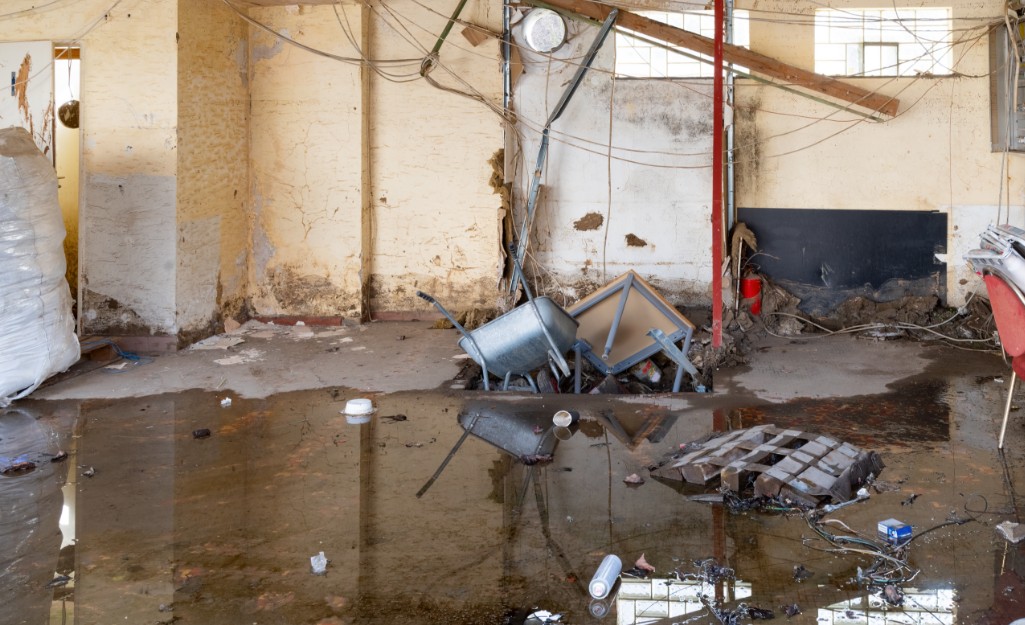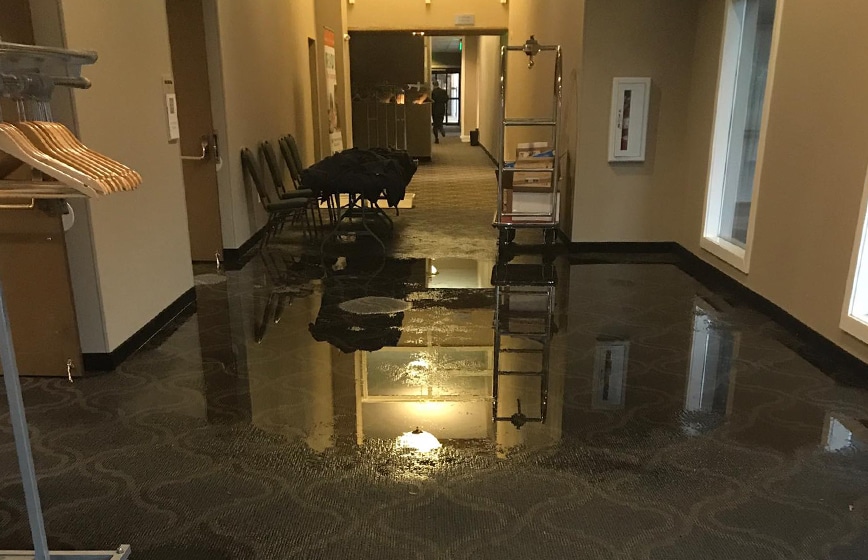Step-by-step breakdown at the Flood Cleanup Services procedure
Water Damage Restoration 101: Understanding the Process and Price
Water damage can strike suddenly, leaving home owners in a state of confusion. Recognizing the repair procedure is essential for reliable recuperation. From examining the damage to choosing the best provider, each action affects the overall outcome and price. Elements such as the kind of water damage and urgency additionally play a substantial function. What are the specific methods utilized in remediation, and just how can one get ready for potential expenditures?
Sorts Of Water Damage

Initial Assessment and Examination

Water Extraction Methods
Adhering to the preliminary assessment, effective water removal methods are employed to alleviate damage and protect against more issues. These methods include using specialized equipment such as submersible pumps and industrial-grade vacuums - Water Damage Restoration. The selection of approach depends upon the volume of water existing and the sort of products influenced. For standing water, completely submersible pumps are normally made use of for fast elimination, while vacuums are excellent for extracting water from rugs and upholstery. In addition, advanced approaches like water extraction floor coverings may be used for hard-to-reach areas - Water Damage Restoration. The goal is to eliminate as much water as feasible, decreasing the possibility for mold development and structural damage. Motivate and efficient water removal is important in the overall water damage reconstruction process
Drying Out and Dehumidification Process
Once the water extraction is full, the drying and dehumidification process becomes vital to restoring the afflicted location. This phase generally uses industrial-grade dehumidifiers and air movers to successfully reduce dampness degrees. The dehumidifiers pull in moist air, getting rid of excess moisture, while air moving companies circulate air to speed up dissipation. Tracking tools is frequently used to track moisture and temperature levels, making certain optimal drying out problems. The duration of this procedure can differ depending on the extent of the water damage and ecological variables. It is necessary to extensively dry all affected materials, including wall surfaces, floor covering, and furnishings, to stop mold and mildew development and architectural damage. Proper implementation of this step is vital for an effective remediation end result.
Cleaning and Sterilizing Affected Areas
When the drying out procedure is full, an extensive preliminary evaluation and assessment of affected areas is important to determine contamination levels. Reliable cleaning strategies and appropriate items should after that be employed to remove particles and spots. Lastly, sanitization and sanitation approaches are vital to assure that dangerous virus are gotten rid of, bring back the space to a secure problem
Preliminary Analysis and Inspection
Prior to starting any type of reconstruction efforts, an extensive initial analysis and evaluation of the influenced locations are important for reliable cleaning and sterilizing. This procedure entails recognizing the extent of water damage, establishing the source of the water breach, and assessing the products affected. Examiners generally seek signs of mold and mildew development, structural stability issues, and damaged items. The assessment likewise consists of checking dampness degrees using customized devices to guarantee no covert water pockets continue to be, as these can result in additional difficulties. Documenting the findings is vital for preparing the next action in the restoration procedure. A thorough preliminary analysis enables reconstruction professionals to devise a targeted approach for effective cleaning and disinfecting, eventually minimizing damage and health and wellness his explanation dangers.
Cleansing Techniques and Products
Efficient cleansing and disinfecting of water-damaged locations require a variety of methods and products customized to the specific products influenced. For permeable surface areas like drywall and carpeting, removal techniques are necessary to get rid of excess moisture, followed by deep cleansing with specialized detergents. Non-porous materials such as ceramic tile or metal can be cleaned up utilizing commercial-grade cleaners that successfully get rid of contaminants. Vapor cleaning is an additional reliable method, particularly for rugs and upholstery, as it makes use of high temperatures to remove microorganisms and mold and mildew (Water Damage Restoration). In addition, eco-friendly items are significantly preferred for their security and effectiveness - Water Extraction And Drying. Ultimately, selecting the proper cleaning approaches and items not just assures immediate sanitation yet additionally help in stopping additional damage and health and wellness dangers related to water breach
Sanitization and Disinfection Approaches
When resolving water damage, appropriate sanitization and sanitation techniques are essential to assure the safety and wellness of the affected atmosphere. After preliminary cleansing, surfaces should be treated with proper anti-bacterials to eliminate microorganisms, mold and mildew, and microorganisms that grow in damp problems. Common approaches consist of using EPA-approved chemical anti-bacterials, which can be applied via spraying or wiping techniques. Additionally, ultraviolet (UV) light systems can effectively sterilize locations by neutralizing bacteria without severe chemicals. The option of technique frequently relies on the kind of materials impacted and the level of contamination. Ultimately, complete sanitization not just recovers a secure space yet additionally aids protect against future health dangers connected with remaining moisture and mold development.

Fixings and Restoration Options
Assessing the damage triggered by water exposure is important for establishing the appropriate repairs and remediation choices. Home owners might encounter various issues, including damaged drywall, distorted flooring, and jeopardized architectural elements. Depending upon the degree of the damage, repair services might include changing areas of drywall, mounting brand-new floor covering, or strengthening architectural beam of lights. In instances of extreme damage, full substitute of afflicted materials may be required. Additionally, expert restorers commonly suggest utilizing dampness meters to evaluate hidden dampness degrees before selecting the most effective strategy. It is important to act without delay to prevent mold and mildew growth and more degeneration. Choosing the ideal options not just restores the residential property but additionally ensures long-term safety and security and performance.
Factors Affecting Restoration Costs

The extent of water damage straight impacts the repair costs home owners can expect to incur. Variables such as the source of the water, the duration of exposure, and the afflicted products greatly affect rates. For instance, clean water damage from a damaged pipeline is typically much less pricey to restore compared to damage triggered by sewer. In addition, the degree of contamination determines the need for specialized cleaning and disposal services, additionally raising expenses. Geographic location also plays a function, as local labor prices and availability of reconstruction solutions can differ. Finally, the urgency of the response affects costs; quicker interventions normally lead to lower general expenditures by avoiding additional damage. Comprehending these elements is vital for property owners when estimating reconstruction expenses.
The three key types of water damage are categorized based on contamination levels: clean water, grey water, and black water. A comprehensive first analysis and assessment are crucial actions in the water damage remediation process. For standing water, completely submersible pumps are commonly used for fast removal, while vacuum cleaners are optimal for extracting water from carpetings and furniture. The degree of water damage directly influences the repair sets you back house owners can expect to sustain. Clean water damage from a broken pipeline is generally much less costly to recover compared to damage caused by sewer.